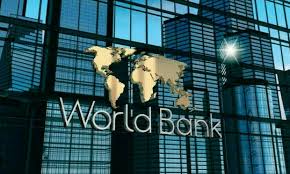The World Bank has revised its economic growth forecast for Kenya down to 4.5% for 2025, cutting half a percentage point from its earlier projection. The global lender cited rising public debt, high interest rates, and a decline in private sector credit as key reasons for the downgrade.
Kenya, which is East Africa’s biggest economy, has consistently recorded strong growth over the years. However, the latest World Bank Kenya Economic Update, released on Tuesday, paints a picture of mounting economic pressure driven by a tough domestic borrowing environment and reduced external funding.
Naomi Mathenge, a senior economist at the World Bank, said during the briefing that domestic borrowing and high lending rates are squeezing out private sector growth. “Domestic borrowing, coupled with high lending rates, risk crowding out the private sector,” she stated.
The World Bank noted that the Kenyan government has turned more to domestic markets to finance its budget. This shift follows reduced access to external loans and funding. But this move has created new problems, including rising borrowing costs for private businesses and slower growth in credit to the private sector.
According to the World Bank, private sector credit growth dropped to -1.4% in December 2024, a sharp reversal from the 13.9% growth recorded in December 2023. The fall in credit availability has hurt sectors like manufacturing, mining, and financial services, which rely heavily on bank loans for working capital and expansion. The report also said bad loans are rising, especially among small commercial lenders, further weakening the credit system.
Kenya’s total public debt currently stands at 65.5% of the country’s Gross Domestic Product (GDP), putting the country in a high-risk debt distress category. The World Bank warned that this level of debt, if not managed properly, poses serious threats to economic recovery and future growth.
The economy grew by 4.7% in 2024, lower than the 5.7% recorded in 2023. The decline was partly linked to political unrest and public protests in mid-2024 against new tax hikes introduced by the government to raise revenue. These protests disrupted business activities across major cities and slowed investor confidence.
While inflation and foreign exchange rates have remained largely stable since last year, the report said real lending rates have stayed high, making it harder for businesses and individuals to access affordable credit. The World Bank also expressed concern over tax revenue shortfalls and growing government arrears, which have slowed progress on fiscal consolidation efforts.
Looking ahead, the World Bank projected that Kenya’s economic growth could recover to about 5.0% by 2026. However, it warned that the recovery is dependent on improved weather conditions, global economic stability, and successful implementation of tax reforms.
The report advised the Kenyan government to adopt targeted tax changes, especially removing exemptions in some consumption taxes, as part of wider efforts to boost revenue. These reforms, the World Bank said, will not only help reduce reliance on debt but also promote inclusive growth.
Economists say Kenya must now balance between cutting its fiscal deficit and supporting private sector growth. Without credit access and an improved investment climate, job creation and economic expansion could slow further. The country’s development partners, including the International Monetary Fund (IMF), have also encouraged the government to reduce subsidies and boost domestic resource mobilisation.
As Kenya faces mounting financial pressure, experts believe there is an urgent need for stronger public finance management and improved transparency in government spending. The government has not yet officially responded to the new World Bank projections, but officials have in the past defended their borrowing plans as necessary for infrastructure development and economic transformation.
